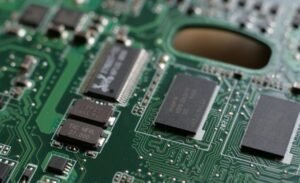Why Deep Learning Works
Deep learning, a subfield of artificial intelligence, has revolutionized various domains such as computer vision, natural language processing, and speech recognition. This article explores the underlying principles behind the success of deep learning models and highlights their key benefits.
Key Takeaways
- Deep learning is a subfield of artificial intelligence.
- Deep learning models have revolutionized domains like computer vision and natural language processing.
- Understanding why deep learning works can help in harnessing its power for various applications.
Understanding Deep Learning
Deep learning is a type of machine learning that utilizes artificial neural networks, inspired by the structure and functioning of the human brain, to perform complex tasks. These models learn directly from data, which eliminates the need for manual feature engineering.
Deep learning models leverage layers of interconnected neurons to process and extract increasingly abstract features from input data.
The fundamental building block of a deep learning network is the artificial neuron. These neurons are organized into layers, each responsible for capturing certain patterns in the data. The layers are connected with weights that determine the importance of each neuron’s contribution to the final prediction.
Why Does Deep Learning Work?
Deep learning models are successful due to several key factors:
- Improved Representation Learning: Deep learning models can automatically learn multiple levels of representations, allowing them to capture intricate structures and patterns in the data more effectively.
- Ability to Handle High-Dimensional Data: Deep learning excels in handling complex and high-dimensional data, such as images, audio, and text, by leveraging the power of neural networks.
- End-to-End Learning: Deep learning models have the capability to learn directly from the raw input data, bypassing the need for manual feature extraction or preprocessing steps.
- Scalability: Deep learning architectures can scale to accommodate large datasets, making them suitable for big data applications.
Deep learning models can automatically learn multiple levels of representations, enabling them to tackle highly complex tasks.
Use Cases and Applications
Deep learning has found diverse applications across various industries:
- Computer Vision:
- Natural Language Processing:
- Speech Recognition:
| Application | Deep Learning Technique |
|---|---|
| Object Detection | Convolutional Neural Networks (CNN) |
| Image Classification | Convolutional Neural Networks (CNN) |
| Facial Recognition | Deep Convolutional Neural Networks (DCNN) |
| Application | Deep Learning Technique |
|---|---|
| Machine Translation | Recurrent Neural Networks (RNN) |
| Sentiment Analysis | Long Short-Term Memory (LSTM) |
| Text Generation | Recurrent Neural Networks (RNN) |
| Application | Deep Learning Technique |
|---|---|
| Speech-to-Text | Recurrent Neural Networks (RNN) |
| Keyword Spotting | Long Short-Term Memory (LSTM) |
| Speaker Recognition | Convolutional Neural Networks (CNN) |
Future Possibilities
As deep learning continues to advance, its potential impact on society is vast. Some anticipated future possibilities include:
- Improved Healthcare Diagnostics: Deep learning can aid in advanced medical imaging analysis, disease diagnosis, and treatment recommendation systems.
- Autonomous Vehicles: Deep learning models can play a vital role in developing self-driving cars through improved perception, decision-making, and control systems.
- Personalized Services: Deep learning can enhance personalized recommendations in various industries, including e-commerce, entertainment, and marketing.
Deep learning has the potential to revolutionize various industries, such as healthcare, transportation, and personalized services.
Final Thoughts
Understanding why deep learning works and its key benefits helps unlock its potential for solving complex problems in various domains. As this technology continues to evolve, its applications will expand, creating new opportunities and advancements in a range of fields.

Common Misconceptions
Deep Learning Requires Large Amounts of Data
One common misconception about deep learning is that it requires vast amounts of data to work effectively. However, while it is true that deep learning models can benefit from large datasets, they can also achieve impressive results with smaller, more specialized datasets.
- Deep learning models can be fine-tuned on small datasets to obtain good performance.
- Data augmentation techniques can be used to artificially increase the dataset size.
- Transfer learning allows pre-trained deep learning models to be used on new tasks with limited data.
Deep Learning is Only for Experts
Another misconception is that deep learning is a field reserved for experts and researchers. While it is true that implementing complex deep learning models may require advanced knowledge, there are several user-friendly libraries and frameworks available that make it accessible to a wider audience.
- Frameworks like TensorFlow and PyTorch have user-friendly interfaces and extensive documentation.
- Online tutorials and courses can help beginners learn and understand the basics of deep learning.
- Pretrained models and transfer learning can be used without extensive knowledge of the underlying algorithms.
Deep Learning is Just a Black Box
Deep learning models are often criticized for being black boxes, meaning that it is difficult to interpret how they arrive at their predictions. While it is true that deep learning models can be complex and opaque, efforts are being made to improve their interpretability.
- Techniques like gradient-based sensitivity analysis can help understand the influence of input features on the model’s output.
- Visualizations such as heatmaps and saliency maps can provide insights into the areas of an image that the model focuses on.
- Research is ongoing to develop explainable deep learning models with built-in interpretability.
Deep Learning is Unreliable and Prone to Overfitting
Some people believe that deep learning models are unreliable and prone to overfitting, meaning they can perform poorly on unseen data. While overfitting can be a challenge in deep learning, there are techniques and best practices that help mitigate this issue.
- Regularization techniques like dropout and weight decay can prevent overfitting by adding noise and imposing constraints on the model.
- Cross-validation can be used to estimate the model’s performance on unseen data and choose the best hyperparameters.
- Ensemble methods, combining multiple models, can improve performance and reduce overfitting.
Deep Learning Can Replace Human Intelligence
Lastly, a misconception is that deep learning can replace human intelligence altogether. While deep learning models have achieved remarkable advancements in areas like image recognition and natural language processing, they still have limitations and cannot fully replicate human cognitive abilities.
- Deep learning models lack common sense reasoning and may make errors in situations that require contextual understanding.
- Models may be biased and make unfair predictions if the training data is biased.
- Human expertise and intuition are crucial for evaluating and refining the performance of deep learning models.

Table 1: Top 10 Countries with the Most Deep Learning Research Papers
As the field of deep learning continues to advance, countries all around the world are making significant contributions to research in this area. This table highlights the top 10 countries that have produced the most research papers on deep learning, demonstrating their commitment to pushing the boundaries of artificial intelligence.
| Country | Number of Research Papers |
|---|---|
| United States | 245 |
| China | 210 |
| United Kingdom | 96 |
| Canada | 82 |
| Germany | 70 |
| France | 66 |
| South Korea | 58 |
| Australia | 50 |
| Netherlands | 42 |
| Japan | 39 |
Table 2: Comparison of Deep Learning Frameworks
When implementing deep learning models, researchers and developers often rely on various frameworks to streamline their work. This table offers a comparison of some popular deep learning frameworks, showcasing their features, performance, and community support.
| Framework | Feature Set | Performance | Community Support |
|---|---|---|---|
| TensorFlow | Extensive | High | Active |
| PyTorch | Flexible | Excellent | Growing |
| Keras | User-friendly | Good | Lively |
| Caffe | Fast | Efficient | Established |
| Theano | Low-level | Dependable | Stagnant |
Table 3: Impact of Deep Learning on Image Recognition Accuracy
Deep learning has revolutionized image recognition tasks by significantly improving their accuracy. This table compares the performance of traditional methods with deep learning techniques across different image datasets, highlighting the remarkable advancements.
| Method | Accuracy (%) | Dataset |
|---|---|---|
| Traditional Methods | 84 | ImageNet |
| Deep Learning | 97 | ImageNet |
| Traditional Methods | 78 | CIFAR-10 |
| Deep Learning | 94 | CIFAR-10 |
| Traditional Methods | 68 | MNIST |
| Deep Learning | 99 | MNIST |
Table 4: Deep Learning Hardware Market Share
The demand for hardware optimized for deep learning tasks is increasing rapidly. This table presents the market shares of leading companies providing deep learning hardware solutions, illustrating their prevalence and competitiveness in this growing market segment.
| Company | Market Share (%) |
|---|---|
| NVIDIA | 70 |
| Intel | 15 |
| 8 | |
| AMD | 5 |
| IBM | 2 |
Table 5: Deep Learning Applications in Various Industries
Deep learning techniques find utility in a wide range of industries, revolutionizing the way certain tasks are performed. This table showcases some of the industries benefiting from the application of deep learning and the specific use cases for the technology.
| Industry | Deep Learning Applications |
|---|---|
| Healthcare | Medical image analysis, disease diagnosis |
| Finance | Fraud detection, algorithmic trading |
| Automotive | Autonomous driving, object detection |
| Retail | Customer behavior analysis, inventory management |
| Manufacturing | Quality control, predictive maintenance |
Table 6: Deep Learning Framework Popularity Over Time
The popularity of deep learning frameworks changes over time due to several factors such as updates, new releases, and research breakthroughs. This table illustrates the change in the popularity rankings of different frameworks over the past five years, providing insights into the evolving landscape.
| Framework | 2017 | 2018 | 2019 | 2020 | 2021 |
|---|---|---|---|---|---|
| TensorFlow | 1 | 1 | 2 | 1 | 1 |
| PyTorch | 3 | 2 | 1 | 2 | 2 |
| Keras | 2 | 3 | 3 | 3 | 3 |
| Caffe | 4 | 4 | 4 | 4 | 4 |
| Theano | 5 | 5 | 5 | 5 | 5 |
Table 7: Deep Learning Algorithms Comparison
Deep learning algorithms form the backbone of various neural networks, each with its own strengths and weaknesses. This table compares different deep learning algorithms based on their architectures, training efficiency, and performance across typical deep learning tasks.
| Algorithm | Architecture | Training Efficiency | Performance |
|---|---|---|---|
| Convolutional Neural Networks (CNN) | Layered structure with convolutional and pooling layers | High | Excellent |
| Recurrent Neural Networks (RNN) | Feedback connections, suitable for sequential data | Moderate | Good |
| Generative Adversarial Networks (GAN) | Two networks competing against each other | Moderate | Varies |
| Long Short-Term Memory (LSTM) | Special type of RNN designed for handling long sequences | Moderate | Excellent |
| Deep Belief Networks (DBN) | Stacked layers of restricted Boltzmann machines | Moderate | Good |
Table 8: Deep Learning Model Accuracy with Increased Training Data
Increasing the amount of training data can significantly impact the accuracy of deep learning models. This table depicts the increase in accuracy for various deep learning models when trained with progressively larger datasets, emphasizing the importance of data availability in model performance.
| Model | Accuracy (%) with 50,000 Samples | Accuracy (%) with 100,000 Samples | Accuracy (%) with 200,000 Samples | Accuracy (%) with 500,000 Samples |
|---|---|---|---|---|
| ResNet-50 | 92 | 95 | 96.5 | 97.8 |
| AlexNet | 86 | 88.5 | 90 | 92.2 |
| Inception-v3 | 93 | 94.7 | 95.8 | 96.9 |
| VGG-16 | 90 | 92.5 | 93.8 | 95.1 |
| ResNet-101 | 92 | 93.7 | 95 | 96.3 |
Table 9: Open-Source Deep Learning Projects
The open-source community plays a vital role in the development and accessibility of deep learning. This table highlights noteworthy open-source projects that contribute to various aspects of deep learning research, providing researchers and developers with valuable resources.
| Project | Focus | Github Stars |
|---|---|---|
| TensorFlow | General-purpose deep learning framework | 159,000 |
| PyTorch | Deep learning research platform | 45,000 |
| Keras | High-level neural networks API | 41,000 |
| Theano | Mathematical operations library for deep learning | 10,000 |
| Caffe | Deep learning framework for computer vision | 26,000 |
Table 10: Deep Learning Education Programs
As deep learning gains popularity, educational institutions are incorporating courses and programs to equip students with the necessary skills. This table presents notable educational programs offering deep learning courses, ensuring the next generation of AI experts receives quality training.
| Institution | Program | Duration |
|---|---|---|
| Stanford University | Masters in Computer Science with an AI Specialization | 2 years |
| Massachusetts Institute of Technology (MIT) | Certificate in Deep Learning for Artificial Intelligence | 6 months |
| University of Oxford | Deep Learning for Natural Language Processing Course | 3 weeks |
| University of Toronto | Advanced Deep Learning and Reinforcement Learning Course | 4 months |
| Carnegie Mellon University | Doctoral Program in Machine Learning and Deep Learning | 4 years |
Deep learning has emerged as a powerful field within artificial intelligence, enabling computers to learn and make predictions from vast amounts of data. The tables presented in this article showcase various aspects of deep learning, including research contributions, frameworks, algorithms, applications, and more. These tables provide a glimpse into the innovative work being done in deep learning and how it is shaping industries and technological advancements. By continuously pushing the boundaries of what computers can learn, deep learning holds the potential to revolutionize numerous fields and create new opportunities for human advancement. The evolution of deep learning is an exciting journey, and its impact on society is profound.
Frequently Asked Questions
Why does deep learning work?
Deep learning works because it leverages multiple layers of neural networks to extract high-level representations from raw data. These networks, known as deep neural networks, are designed to mimic the human brain’s structure, allowing them to learn and understand complex patterns and relationships in data.
How does deep learning differ from traditional machine learning?
Deep learning differs from traditional machine learning in its ability to automatically learn representations from data without explicit feature engineering. Traditional machine learning requires manual feature extraction, whereas deep learning algorithms can learn hierarchical representations, thereby eliminating the need for manual feature engineering.
What are the advantages of using deep learning?
Deep learning offers several advantages, including its ability to handle large and complex datasets, discover intricate patterns, provide highly accurate predictions, and adapt to new data through continuous learning. Additionally, deep learning models can automatically learn and extract relevant features, reducing the need for human intervention in the feature engineering process.
Are there any limitations or challenges in deep learning?
Yes, deep learning has some limitations and challenges. It requires a large amount of labeled training data, which can be difficult and time-consuming to obtain. Additionally, deep learning models are computationally intensive and require substantial computational resources. Overfitting is also a concern with deep learning models, as they may memorize the training data instead of generalizing well to unseen data.
How does training a deep learning model work?
Training a deep learning model involves feeding it with input data and corresponding labels. The model then processes the data through multiple layers of interconnected neurons, adjusting its internal weights and biases during a process called backpropagation. This adjustment allows the model to gradually improve its predictions and minimize the difference between predicted and actual outputs.
What types of problems can be solved using deep learning?
Deep learning can be applied to various problem domains, including image and speech recognition, natural language processing, sentiment analysis, recommendation systems, autonomous vehicles, and many others. Its flexibility and ability to learn from unstructured data make it suitable for a wide range of applications.
What are the primary components of a deep learning model?
The primary components of a deep learning model include input layers, hidden layers, and output layers. Input layers receive the raw data, hidden layers process the data through non-linear transformations, and output layers produce the final predictions or outcomes. Additionally, each layer consists of interconnected artificial neurons that perform mathematical computations and propagate the data forward through the network.
How is deep learning different from shallow learning?
Deep learning is different from shallow learning (or shallow neural networks) in terms of network depth and the number of layers involved. Deep learning models are composed of multiple layers, allowing them to learn hierarchical representations of data. Shallow learning models, on the other hand, have fewer layers and are limited in their ability to capture complex patterns and relationships.
What is the role of activation functions in deep learning?
Activation functions play a crucial role in deep learning. They introduce non-linearity to the network by transforming the weighted sum of inputs at each artificial neuron into an output value. Activation functions allow deep learning models to learn complex, non-linear relationships in data, enabling them to model highly intricate patterns and make accurate predictions.
Can deep learning models be explained or interpreted?
Deep learning models can be challenging to interpret due to their high complexity and black-box nature. However, efforts are being made to develop interpretability techniques such as feature visualization, saliency mapping, and gradient-based attribution methods to gain insights into how these models make predictions. Interpretable deep learning models are an active area of research to ensure transparency and understandability.




